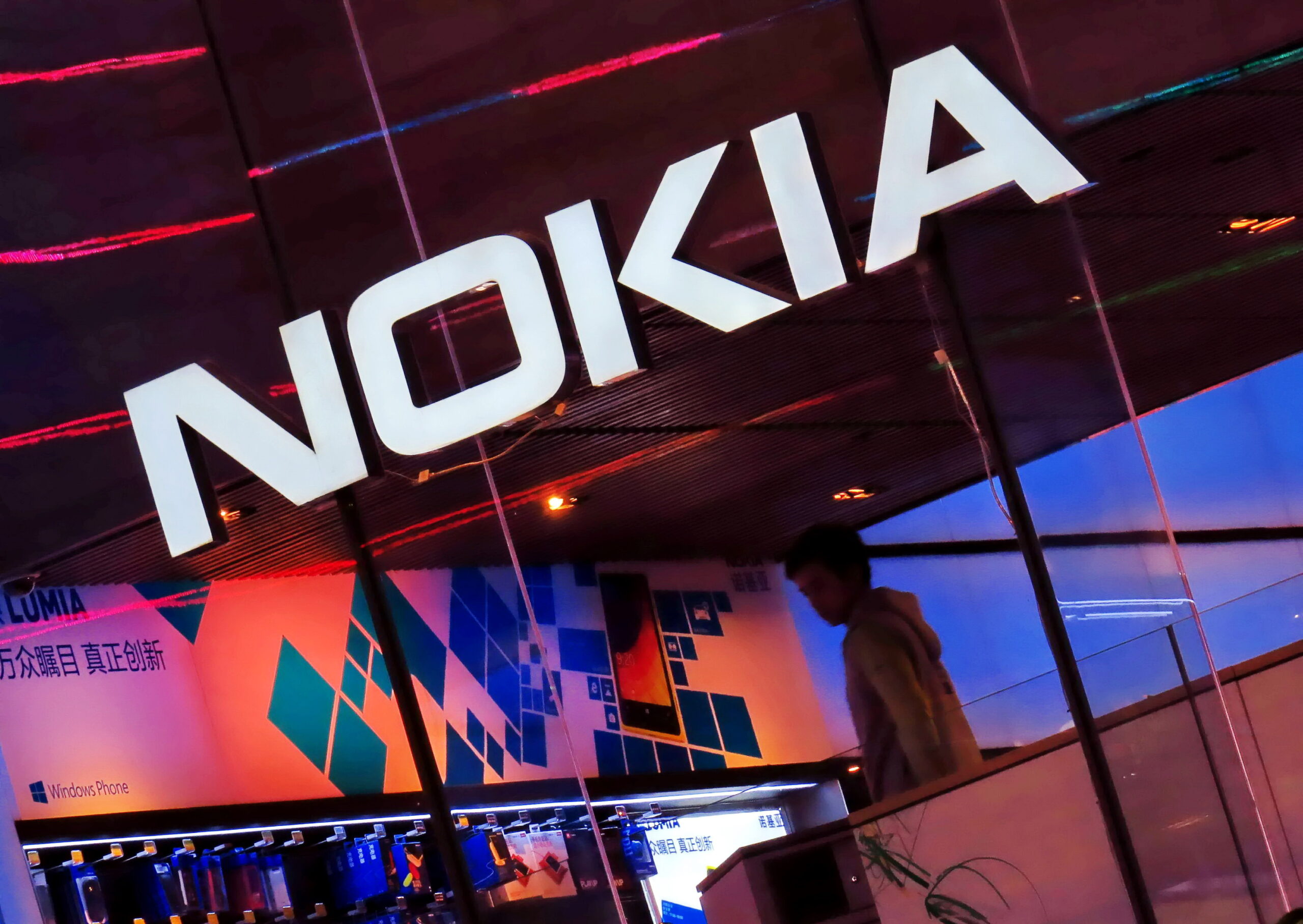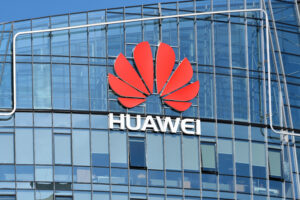As you gaze up at the night sky, imagine a revolutionary advancement unfolding on the lunar surface. Nokia has achieved a remarkable feat by launching the first 4G network on the Moon, ushering in a new era of space communication. This groundbreaking project, executed in collaboration with NASA and Intuitive Machines, aims to establish reliable connectivity for future lunar exploration. While the mission faced unexpected challenges, it successfully demonstrated the potential for wireless networks beyond Earth. As you delve into this article, you’ll discover how this technological milestone is shaping the future of space exploration and bringing us one step closer to a sustained human presence on the Moon.
Nokia and its Lunar 4G Network: Revolutionizing Space Communication

Pioneering Connectivity Beyond Earth
Nokia’s successful deployment of a 4G LTE network on the Moon marks a groundbreaking achievement in space communication. This innovative technology promises to transform lunar exploration by providing reliable, high-speed connectivity for rovers, landers, and future astronauts. The “Network in a Box” solution, designed to withstand the harsh lunar environment, represents a significant leap forward in our ability to establish robust communication infrastructure beyond Earth’s atmosphere.
Overcoming Cosmic Challenges
Despite the IM-2 lander’s off-target landing at Mons Mouton, which shortened the mission, Nokia’s lunar 4G network proved its resilience. The system powered up and transmitted data even in suboptimal conditions, highlighting terrestrial wireless technology’s potential for space applications. This brief yet successful test offers valuable insights for future lunar communication improvements and adaptations.
Paving the Way for a Sustainable Lunar Presence with Nokia
Establishing a 4G network on the Moon is a major technological achievement and a key step toward long-term human presence. It enables reliable data transmission and real-time communication, supporting NASA’s Artemis program and future space missions. As sustained lunar missions expand and Mars exploration becomes possible, maintaining strong communication links is crucial. This ensures effective scientific research, resource utilization, and astronaut safety, making advanced communication systems essential for space exploration.
Powering Lunar Exploration: The Role of the Network from Nokia in a Box
Innovative Technology for Harsh Environments
Nokia’s Network in a Box (NIB) represents a groundbreaking leap in space communication technology. This compact, self-contained system is designed to withstand the Moon’s extreme conditions, including intense radiation, extreme temperature fluctuations, and the vacuum of space. The NIB’s robust construction ensures reliable performance in an environment where traditional terrestrial networks would fail.
Enabling Real-Time Communication
The 4G LTE network established by Nokia’s NIB aims to revolutionize lunar exploration by enabling seamless, real-time communication between rovers, landers, and Earth-based control centers. This capability is crucial for coordinating complex operations, transmitting scientific data, and ensuring the safety of future human missions. The network’s low latency and high bandwidth support video streaming, telemetry, and remote control functionalities are essential for lunar research and exploration.
Future-Proofing Lunar Infrastructure
While the initial deployment faced challenges due to the IM-2 lander’s off-target landing, the brief activation of the system demonstrated its potential. Nokia’s commitment to refining this technology, including plans for 5G networks, showcases a long-term vision for establishing sustainable communication infrastructure on the Moon. This forward-thinking approach aligns with NASA’s Artemis program goals and sets the stage for a permanent human presence beyond Earth, paving the way for deeper space exploration and scientific discovery.
Overcoming Challenges: Navigating the Mons Mouton Landing
An Unexpected Detour
The IM-2 lander’s off-target landing at Mons Mouton presented a significant hurdle for Nokia’s groundbreaking lunar 4G network deployment. This unforeseen location shift not only impacted the lander’s ability to recharge but also curtailed the mission’s duration. Despite these setbacks, the team’s resilience and adaptability shone through, demonstrating the robustness of the technology in extreme conditions.
A Brief but Crucial Connection
In the face of adversity, Nokia’s Network in a Box system proved its mettle. Although the mission’s scope was reduced, the equipment successfully powered up and transmitted data, albeit briefly. This momentary connection marked a pivotal achievement in space communication, confirming the viability of terrestrial wireless technology in the harsh lunar environment.
Lessons for Future Missions
The challenges encountered at Mons Mouton have provided invaluable insights for upcoming lunar expeditions. Engineers and scientists are now armed with real-world data on the performance of 4G systems in unexpected lunar terrains. This experience will undoubtedly shape the development of more robust and flexible communication solutions, paving the way for reliable connectivity in future Moon missions and beyond.
Paving the Way for a Sustained Human Presence on the Moon
Establishing Crucial Infrastructure
Nokia’s successful deployment of a 4G LTE network on the Moon marks a significant milestone in space exploration. This groundbreaking achievement lays the foundation for sustainable communication infrastructure, essential for future lunar missions and long-term human presence beyond Earth. By enabling reliable connectivity, this technology will support critical operations, data transmission, and real-time communication between astronauts, rovers, and mission control.
Overcoming Challenges in Lunar Communication
Despite the initial setback of the IM-2 lander’s off-target landing, the brief activation and data transmission of Nokia’s Network in a Box demonstrated the feasibility of wireless networks in the harsh lunar environment. This resilience showcases the potential for adapting terrestrial technologies to extraterrestrial conditions, paving the way for more advanced systems like 5G networks on the Moon.
Future Implications for Space Exploration
The establishment of reliable communication networks on the lunar surface is a crucial stepping stone for NASA’s Artemis program and future deep space missions. As we look towards a sustained human presence on the Moon, this technology will enable:
Seamless coordination between astronauts and ground control
Efficient data collection and transmission for scientific research
Enhanced safety measures through constant connectivity
Support for autonomous systems and robotic explorers
By pushing the boundaries of communication technology in space, we are not only advancing lunar exploration but also preparing for humanity’s next giant leap into the cosmos.
The Future of Lunar Connectivity: Towards 5G and Beyond
Advancing Lunar Networks
As Nokia’s 4G LTE network on the Moon marks a significant milestone, the future of lunar connectivity looks even more promising. The successful deployment of this technology paves the way for more advanced networks, including 5G, to support long-term Moon exploration. These next-generation networks will be crucial in enabling high-speed data transmission, real-time communication, and seamless connectivity for future lunar missions.
Enhancing Exploration Capabilities
The implementation of 5G technology on the Moon will revolutionize space exploration. With its ultra-low latency and high bandwidth capabilities, 5G networks will support more sophisticated lunar rovers, automated systems, and even augmented reality applications for astronauts. This enhanced connectivity will enable scientists and researchers on Earth to remotely operate equipment and analyze data in real-time, significantly accelerating scientific discoveries and technological advancements.
Building a Sustainable Lunar Presence
As we look beyond 5G, the development of lunar communication infrastructure will play a vital role in establishing a sustainable human presence on the Moon. Future networks will need to be more robust, energy-efficient, and capable of covering larger areas of the lunar surface. These advancements will support not only scientific endeavors but also potential commercial activities, such as lunar mining and tourism. By creating a reliable and extensive communication network, we’re laying the groundwork for a new era of space exploration and habitation.
To Summarize
Nokia’s groundbreaking achievement in establishing a 4G network on the Moon represents a significant leap forward in space communication technology. Despite the challenges faced during the mission, this project has demonstrated the potential for reliable wireless connectivity beyond Earth. The implications for future lunar exploration and long-term human presence on the Moon are profound. As we look ahead, it is clear that this milestone will pave the way for more advanced communication systems in space, enabling us to push the boundaries of human exploration even further. The successful deployment of this lunar 4G network marks the beginning of a new era in space telecommunications, bringing us one step closer to a future where the Moon is not just a distant celestial body, but a connected extension of our technological reach.
More Stories
Salesforce Accelerates AI-Driven Cloud Data Integration with Informatica Acquisition
Salesforce acquires Informatica in a deal valued at around $8 billion as part of a bold move to redefine its approach to cloud data management.
Samsung’s AI Power Play: Perplexity Partnership Signals Shift from Google
Samsung is poised to redefine AI in its Galaxy smartphones through a bold strategic move. It has partnered with Perplexity AI, an innovative U.S.-based startup. This signals a possible shift away from Google’s AI ecosystem. As a result, Samsung may integrate Perplexity’s advanced assistant into its devices.
Amazon’s Bold $150 Billion Drive to Expand AI-Powered Data Centers
Amazon has embarked on an audacious journey, committing a staggering $150 billion over the next 15 years to expand its AI-powered data centers worldwide.
KT Cloud Accelerates Digital Growth with New High-Tech Data Center in Yecheon-Gun
KT Cloud new data center in Yecheon-gun marks a key public-private effort with Gyeongsangbuk-do and Yecheon County.
Microsoft Cloud Momentum Fuels AI Growth Across Indonesia and Malaysia
Microsoft Cloud services expands strategically into Indonesia and Malaysia to reshape Southeast Asia’s technological landscape.
Roblox Farming Craze Fuels Surging App Store Economy
As you dive into the dynamic world of digital economies, one phenomenon stands out: the Roblox farming craze. This surge,...


